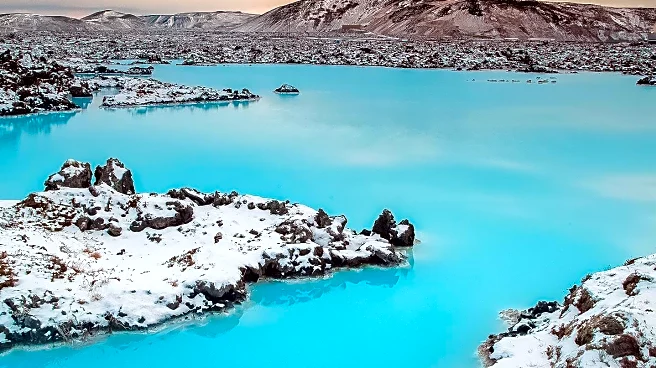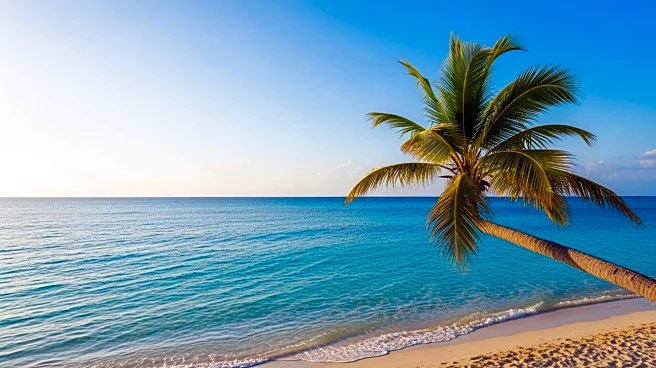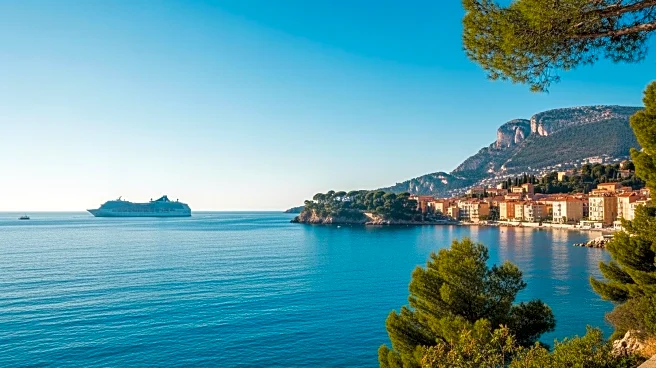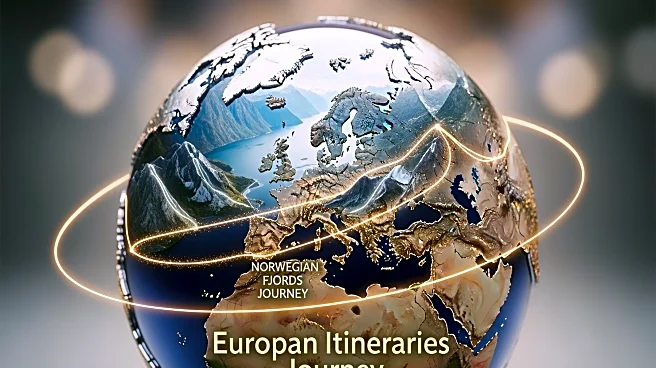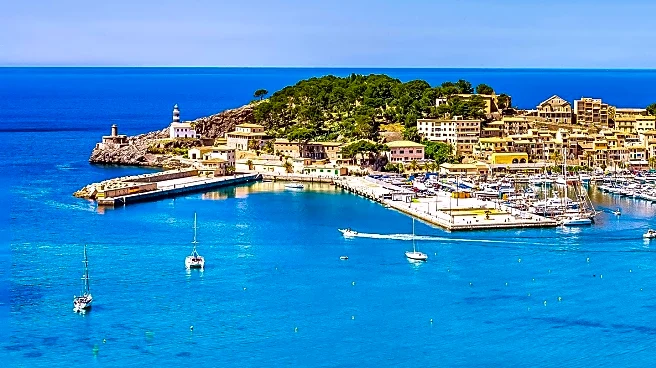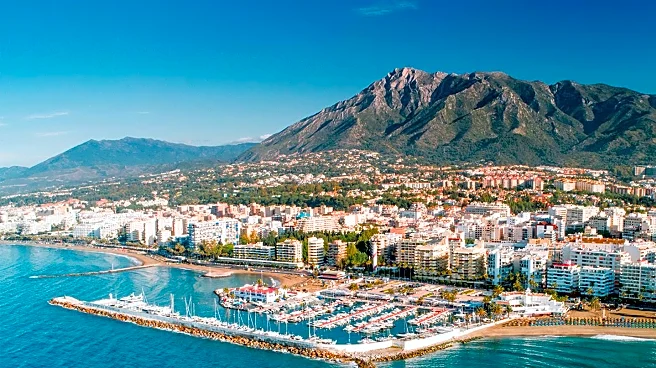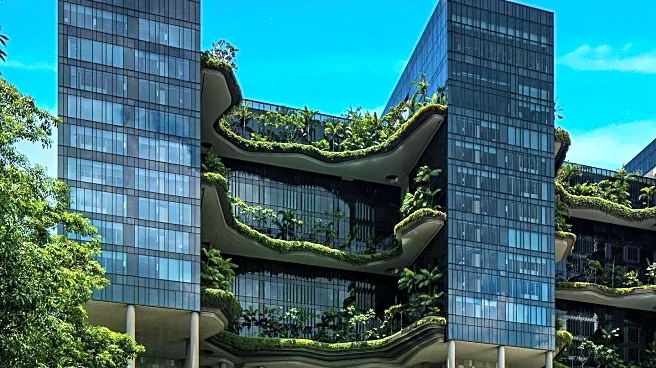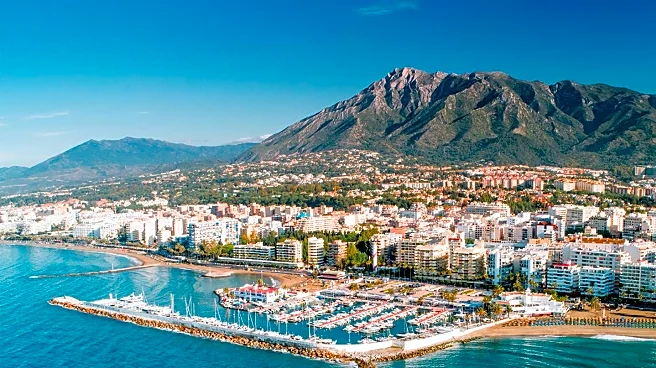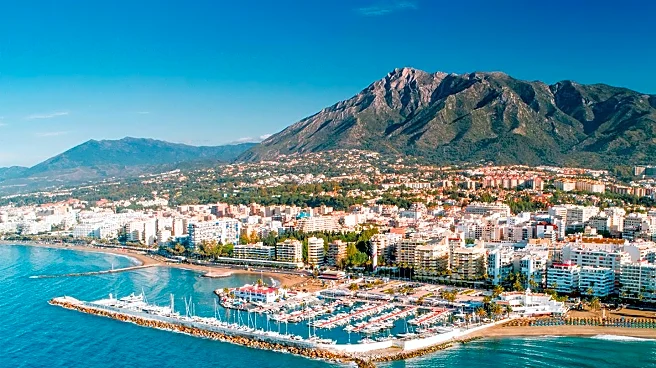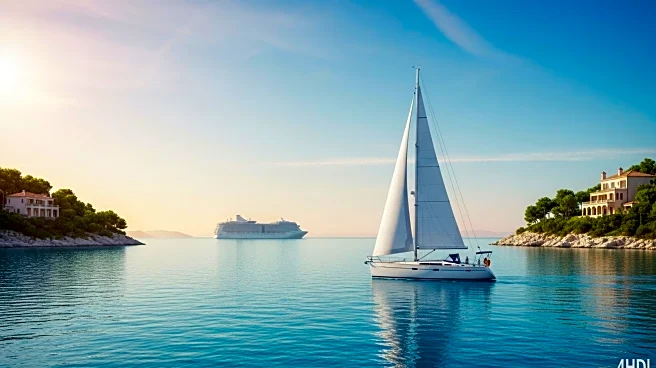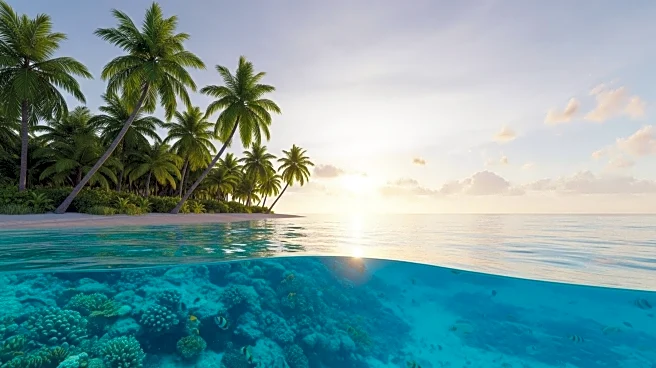What's Happening?
A new geothermal bathing lagoon has opened in the village of Laugarás, South Iceland, marking a significant addition to the region's spa destinations. The Laugarás Lagoon, a project that began over a decade ago, has evolved into a two-tier bathing complex
featuring saunas, outdoor showers, and both hot and cold tubs. The lagoon spans 1,000 square meters and is designed to blend seamlessly with its natural surroundings, featuring a grass-covered roof and architecture inspired by local caves. Bryndís Björnsdóttir, the managing director, emphasized the goal of creating a retreat that feels integral to the landscape. The lagoon also hosts the Ylja restaurant, led by chef Gísli Matthías Auðunsson, who uses locally sourced ingredients.
Why It's Important?
The opening of Laugarás Lagoon underscores the growing trend of wellness tourism in Iceland, attracting visitors seeking relaxation and natural beauty. This development is likely to boost local tourism and economy, providing new opportunities for businesses and local farmers supplying the restaurant. The lagoon's sustainable design reflects a broader movement towards eco-friendly tourism, appealing to environmentally conscious travelers. As wellness tourism continues to rise globally, destinations like Laugarás Lagoon could position Iceland as a leading location for health-focused travel experiences.
What's Next?
The Laugarás Lagoon is expected to draw more visitors to South Iceland, potentially leading to further development in the area. Local businesses may see increased demand, prompting expansions or new ventures. The success of the lagoon could inspire similar projects, enhancing Iceland's reputation as a wellness destination. Stakeholders, including local government and tourism agencies, may focus on promoting sustainable tourism practices to maintain the region's natural beauty while accommodating increased visitor numbers.
Beyond the Headlines
The Laugarás Lagoon's integration with its environment highlights the importance of sustainable tourism development. This approach not only preserves the natural landscape but also supports local communities by utilizing regional resources. The project may serve as a model for future developments, balancing economic growth with environmental stewardship. As wellness tourism grows, ethical considerations around resource use and community impact will become increasingly significant.
